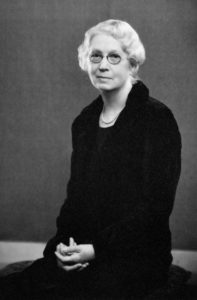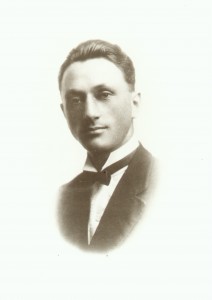The Origins of the Global Bahá’í Community
Bahá’u’lláh who delivered a new Revelation from God to humanity is the latest in the series of the Divine Teachers which include Moses, Krishna, Muhammad and Christ. Bahá’u’lláh reminds us of ancient spiritual truths and brings social teachings necessary and relevant for today’s world.
All men have been created to carry forward an ever-advancing civilization.Bahá'u'lláh
The Bahá’í Community in Aotearoa New Zealand
So, where did it all begin for us in Aotearoa? From 1913 to 1922, the Bahá'í Faith had a single follower in Aotearoa New Zealand - a courageous woman named Margaret Stevenson who was born in Onehunga on 30 November 1865.
E te tama a te tangata! Inā Tōku aroha ki tō hanganga, i hangaia ai ko koe. Inā hoki, ki te aroha mai koe ki a Au, ka whakapuakina ai ko tōu ingoa, ka whakakīa ai tōu wairua ki te hā o te ora.Bahá'u'lláh
Tangata Whenua
From 1931, the Bahá’í community sought to take the Message of Bahá’u’lláh to Māori. Contact began with a month-long visit to New Zealand by an overseas Bahá’í, Mrs Keith Ransom-Kehler, who was welcomed onto the Orakei Marae where she met with Māori leaders. Two years later, in 1933, a pamphlet which had been prepared specifically for Māori was translated into Te Reo.
In October 1958, a prominent Bahá’í from Uganda, Mr Enoch Olinga, met with Māori chiefs at Mangatoatoa Pā during a six-day visit to New Zealand, the main purpose of which was to meet the Māori people. He went to Ngaruawahia where he met with King Koroki’s advisers, and to Rotorua where he was welcomed onto several marae and met Guide Rangi. During his visit Mr Olinga spoke to a gathering of two hundred Māori at Kihikihi.
Four years later, in 1962, Ephraim Te Paa, Te Rarawa, a Kaumātua (Māori elder) living in Ahipara, became a Bahá’í, having first heard of the Faith when Mr Olinga spoke at Ngaruawahia. When, in April of that year, another prominent Bahá’í, Dr. Muhajir, travelled throughout the North Island meeting the Māori people, Ephraim accompanied him and explained the Faith in Māori to the various tribes they visited. During his long life as an active Bahá’í, Ephraim continued to promote mutual understanding between Māori and Bahá’ís.
Later in the 1960s, Bahá’ís were received by the Māori Queen and met with Māori Members of Parliament. By the late 1960s, even though the total number in the Bahá’í community was small, 7.5% were Māori – a ratio that was almost the same as the percentage of Māori in the general population. Ever since, the ratio of Māori in the Bahá’í community has remained consistent with the ratio in the general population
Since then, Māori Bahá’ís have regularly been elected to serve on national and local governing institutions for the Bahá’í community. Conducted by secret ballot, the Bahá'í electoral process prohibits the nomination and presentation of candidates, thereby giving maximum freedom of choice to each elector and avoiding the partisanship and power-seeking behaviour so characteristic of conventional political elections. These elections are held annually in an atmosphere of spirituality and dedication.
In 1983 a group of Bahá’ís, including Ephraim Te Paa, travelled to the Rātana Pā. This was the first official attempt at reaching the Rātana community, although the earliest Bahá’í contact with them was probably via Shirley Charters, an audacious Bahá’í teacher, in the 1960s. Over the years that followed, a number of Bahá’í conferences were held at the Rātana Pā, with up to 700 people attending. By the mid-1990s, the Bahá’ís were invited to hold a spiritual retreat based on the study of the Word of God at Rātana Pā. The first one took place in April 1995. Throughout the 1980s and into the 1990s, significant Bahá'í gatherings were held on Marae, including one on Tūrangawaewae in 1993 which included the then Māori Queen, Dame Te Atairangi Kaahu. Māori Bahá’ís continue to hold regular hui.
Over the years, the Bahá’í community has released a small number of publications in te reo Māori. In 2007, one of the most important Writings of Bahá’u’lláh was translated into te reo Māori – Ngā Kupu Huna a Bahá’u’lláh (The Hidden Words of Bahá’u’lláh). This was followed, in 2011, by a key introductory text, Bahá’u’lláh Me Te Wā Hōu (Bahá’u’lláh and the New Era). Both publications have been formally presented to Māori leaders, including King Te Arikinui Kiingi Tūheitia.

 The first New Zealand Bahá'í, Margaret Stevenson, was born in Onehunga on 30 November 1865. She initially heard of the Bahá'í Faith through reading an article in The Christian Commonwealth sent to her by her sister, Amy, who was studying music in London. Margaret, though, later admitted that she “did not think any more about it”.
The first New Zealand Bahá'í, Margaret Stevenson, was born in Onehunga on 30 November 1865. She initially heard of the Bahá'í Faith through reading an article in The Christian Commonwealth sent to her by her sister, Amy, who was studying music in London. Margaret, though, later admitted that she “did not think any more about it”.